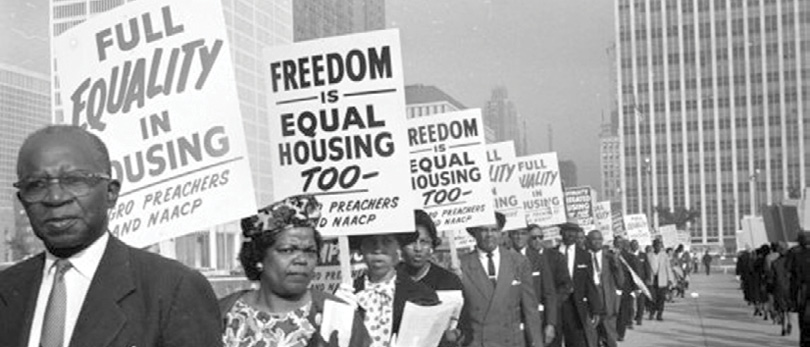By Joseph F. Nery
The Fair Housing Act of 1968 (the “Act”) generally prohibits discrimination in the “sale, rental, or financing of dwellings and in other housing-related activities on the basis of race, color, religion, sex, disability, familial status, or national origin.” In 2020, many people feel the open and intentionally discriminatory practices of decades past no longer exist. Yet policies and procedures that render discriminatory results, even without discriminatory intent, remain in various areas of housing, such as a city preventing affordable housing in certain geographic sectors. To address such situations, the U.S. Department of Housing and Urban Development adopted the legal doctrine known as the Disparate Impact Standard in 2013, which states that a policy may be considered discriminatory if it has a disproportionate “adverse impact” against any of the aforementioned classes.
The failures of HB 4050
In September 2006, Illinois enacted the Residential Real Property Disclosure Act Predatory Lending Database Pilot Program (hereafter referred to as “HB 4050”). The stated goal of this law was to curtail the elevated rates of predatory lending and foreclosures in 10 specific Chicago ZIP codes. Generally speaking, consumers looking to purchase residential homes in the particular ZIP codes had to undergo certified credit counseling if their credit scores fell below 620. The cost of the credit counseling was $300 and was to be incurred by the lender/mortgage broker. HB 4050 applied only to loans issued by Illinois-chartered originators or mortgage brokers.
Although HB 4050 was created to address the foreclosure problem, it was a law without teeth and created more issues than it resolved. First, the law resulted in a more burdensome and expensive process for homebuyers and sellers in the selected ZIP codes. Second, it failed to identify and punish the predatory lenders preying on consumers in the target areas. Third, lenders feared that if they didn’t follow the law’s precise requirements, their mortgages and notes would be unenforceable in default cases.
After studying the demographics of the 10 ZIP codes, I realized they were overwhelmingly African American and Latino neighborhoods. So I sued the state of Illinois because the negative effects of the law were disproportionately affecting racial groups in violation of the disparate impact doctrine. I never had my day in court—the law clearly had an adverse impact in the selected ZIP codes and was suspended by former Governor Rod Blagojevich in January 2007. HB 4050 made me aware of how valuable a disparate impact argument is in a seemingly nondiscriminatory scenario.
The disparate impact argument
Unfortunately, this invaluable tool is under attack as the Consumer Financial Protection Bureau seeks to amend the doctrine by creating a higher burden for plaintiffs filing suits alleging disparate impact. The proposed rule changes would require, among other things, that a challenged policy or practice be arbitrary, artificial and unnecessary—an incredibly difficult burden to prove.
If approved, the revisions would make the disparate impact standard inapplicable in most cases, which would be a travesty when housing-related discrimination is not always blatant and is oftentimes obscured. This valuable tool must be preserved in its current form to ensure fair housing continues well into the future.
For information on how agents can offer equal professional service to all in their search for real estate, check out nar.realtor/fair-housing.
Photo: Walter P. Reuther Library, Archives of Labor and Urban Affairs,
Wayne State University – Photo: iStock.com/Enis Aksoy








